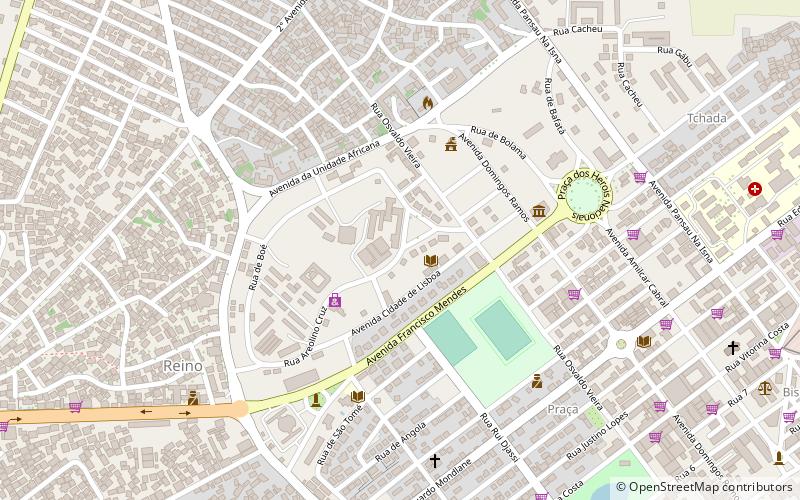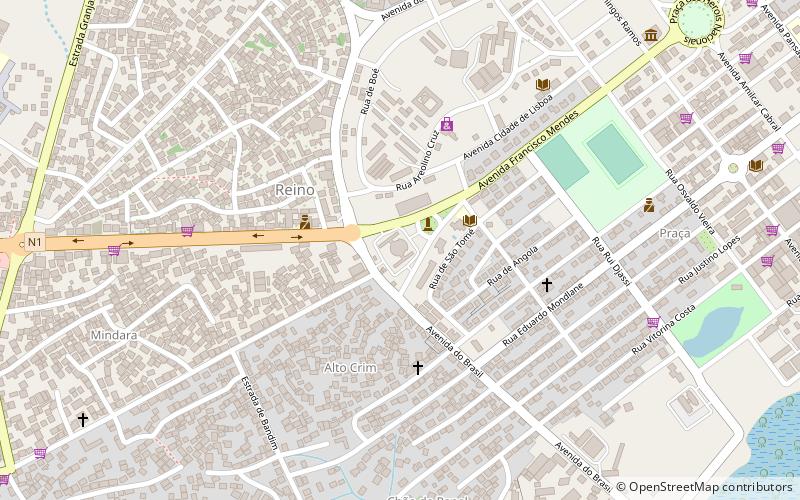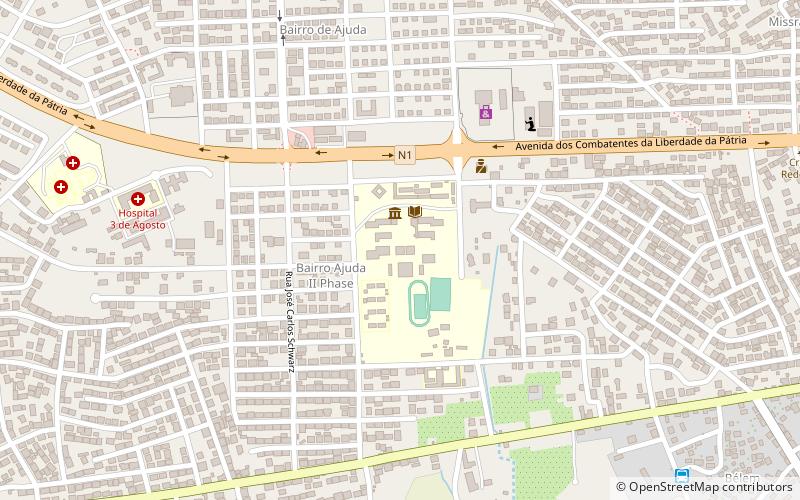Bissau: Sightseeing
Places and attractions in the Sightseeing category
Fortaleza de São José da Amura
Fortaleza de São José da Amura is a fort in Bissau, Guinea Bissau and cemetery with honours for exclusive people.
Bissau Cathedral
Bissau Cathedral, also known as Sé Catedral de Nossa Senhora da Candelária is a Catholic cathedral in Bissau, Guinea-Bissau. It is the centre of the Catholic Church in Guinea-Bissau.
National Ethnographic Museum
National Ethnographic Museum is the national ethnographic museum of Guinea-Bissau. It is situated in Bissau, and is one of two major museums in the country. As of 1998 it had a library of 14,000 volumes.
Port of Bissau
The Port of Bissau, also known as Porto Pidjiguiti, is the chief port of Guinea-Bissau. Located on Geba River, it serves the capital of Bissau. It has two piers and a jetty. The port's Pidjiguiti docks were the site of the Pidjiguiti massacre on 3 August 1959. A light on Bissau Cathedral is maintained by the harbourmaster.
Presidential Palace
The Presidential Palace is the residence of the President of Guinea-Bissau, situated in the capital city of Bissau. At its height it was one of the most substantial buildings in the city, but it was ruined during the 1998–99 Guinea-Bissau Civil War and subject to bombing.
National Lyceum Kwame N'Krumah
The National Lyceum Kwame N'Krumah is a Bissau-Guinean educational institution, based in Bissau, the country's capital. It is the oldest public secondary education institution and one of the most respected in Guinea-Bissau.
Inep
The Biblioteca Pública do INEP is the national library of Guinea-Bissau and it is located in Bissau. It is also the biggest public library in the country and serves as library of the Universidade Amílcar Cabral.
National People's Assembly
The unicameral National People's Assembly is Guinea-Bissau's legislative body. The Assembly has a total of 102 seats, with 100 members being elected through a system of party-list proportional representation, and the remaining two seats being reserved for Guinea-Bissau citizens living overseas. Members serve four-year terms.
Palácio Colinas do Bóe
The unicameral National People's Assembly is Guinea-Bissau's legislative body. The Assembly has a total of 102 seats, with 100 members being elected through a system of party-list proportional representation, and the remaining two seats being reserved for Guinea-Bissau citizens living overseas. Members serve four-year terms.
Universidade Amílcar Cabral
The Universidade Amílcar Cabral is a public higher education institution in Guinea-Bissau. It is the only public university in the country.
Map










